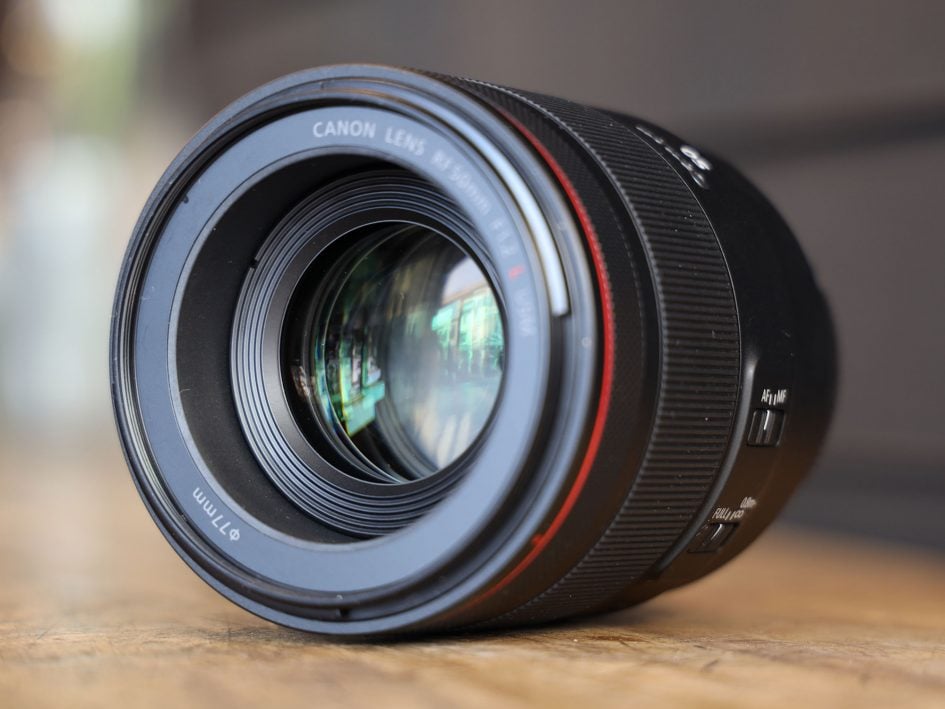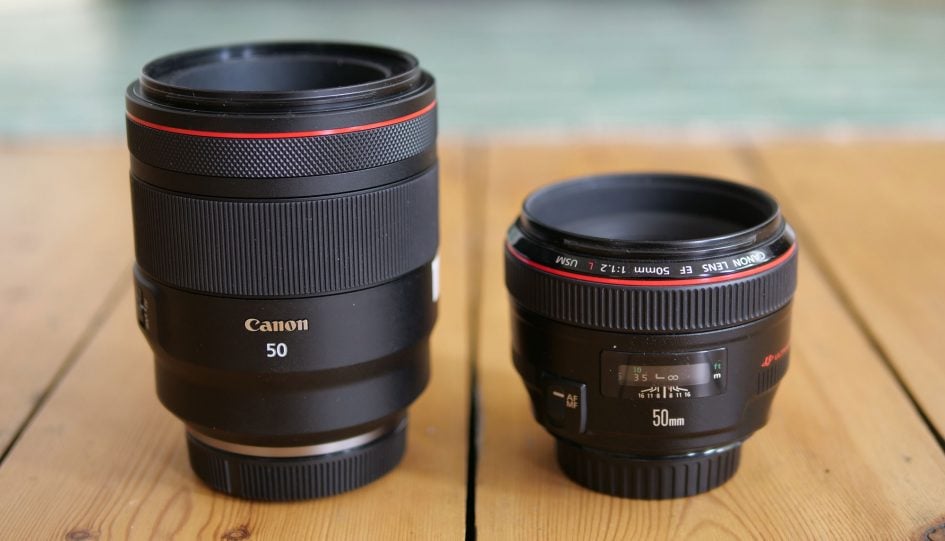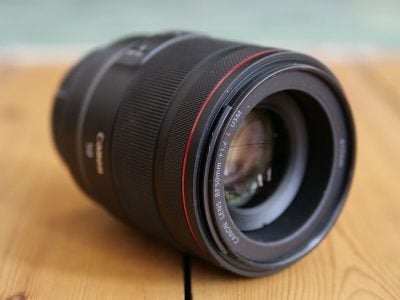Canon RF 50mm f1.2L USM review
-
-
Written by Gordon Laing
Verdict
The Canon RF 50mm f1.2L USM is a standard lens only in terms of its focal length: it boasts the joint brightest aperture in Canon’s range, is the long-awaited update to one of the company’s most legendary lenses, is unapologetically large for any system, goes all-out for quality, and is only available for Canon’s mirrorless EOS R system. Yep, if you want Canon’s latest and greatest 50mm f1.2, you’ll need to switch from DSLR to mirrorless, and also be prepared to invest a hefty chunk of change too.
Arguably the successor to the 12-year-old – but still popular – Canon EF 50mm f1.2L USM, the new RF version couldn’t be physically more different. It’s almost twice as long and roughly double the weight, making it one of the most substantial 50mm full-frame lenses on the market; indeed to my recollection, only the Zeiss Otus 55mm f1.4 has more heft. What makes it even more surprising is the fact this is not a DSLR lens, but one of the first native lenses for Canon’s new mirrorless system, proving the company is not chasing compactness nor portability as a primary goal, at least not yet. Thankfully the EOS R body has an above-averagely deep and tall grip for a mirrorless camera, making the RF 50mm f1.2L USM easier to handle than you’d think, but be in no doubt, this is a large and heavy combination for all but those used to shooting with pro DSLR gear.
The sheer heft of the RF 50mm f1.2L USM allows it to accommodate a completely new optical design that’s much more complex than its EF predecessor, while also exploiting the much closer flange distance of a mirrorless system, and in practice it thankfully adds up to a higher-performance lens. In my tests the newer RF 50mm f1.2L USM delivered crisp results right into the corners even at large apertures, was virtually bereft of geometric distortion and suffered from little to no visible fringing. Compare this to the older EF 50mm f1.2L USM which becomes very soft in the corners, suffers from noticeable barrel distortion and exhibits more obvious fringing, and it’s clear the newer version is way better-corrected.

The newer RF 50mm f1.2L USM is also better-featured: mount it on the EOS R body and it’ll autofocus down to light levels of -6EV, and like all native RF lenses, it supports aperture increments of either one-third or one-eighth EV (great for video shooters) as well as having a customisable control ring on the barrel. That said, if you choose to adapt the older EF version, you could go for the Canon adapter which includes the same customisable control ring, or the version which can accommodate a drop-in variable ND filter which videographers would arguably find more useful than having finer aperture increments. Video shooters will also prefer the mechanically-linked focusing of the older lens compared to the motorised focus-by-wire of the new one.


Above: Canon RF 50mm f1.2 at f1.2
Importantly while modern optical designers love to prove they can create bright aperture lenses that are pin-sharp across the frame, the fact is many potential owners of a 50mm f1.2 lens simply want to obliterate large portions of the frame with a shallow depth-of-field. In this regard the newer RF 50mm f1.2L USM can certainly deliver the goods with beautifully-creamy rendering and an absence of onion rings. As you’d hope, this is a lens that can deliver beautiful results wide-open at f1.2. But crucially in my tests the older EF 50mm f1.2 looked almost identical in this regard, with a very similar rendering style and character despite their very different optical designs.
So you need to ask yourself what it is you want from your 50mm lens and crucially how much you’re willing to spend on it. If you only want the blurring of a 50mm f1.2, then the older Canon EF 50mm f1.2L USM will essentially match it at almost half the price, not to mention roughly half the weight; sure you need to add an adapter to the mix if you’re mounting it on the EOS R, but it’ll still be smaller, lighter and cheaper while also sporting the chance to deploy a rear drop-in filter system. If you’re shooting video, the older EF version will also be preferable due to its mechanical focusing and the chance to mount it with the adapter that supports the drop-in variable ND filter.

Above: Canon RF 50mm f1.2L USM on the left and the EF 50mm f1.2L USM on the right.
If you desire high sharpness across the frame and are willing to have a slightly slower f1.4 focal ratio, then strongly consider the Sigma 50mm f1.4 ART; it may not focus quite as quickly, and again not boast an f1.2 focal ratio, but the quality is excellent and the price is less than half that of the RF 50mm f1.2L USM. Indeed you could buy a pair of Sigma ART lenses – and an adapter for the EOS R – for the same price as the RF 50mm f1.2L USM.
But if you want it all, the Canon EF 50mm f1.2L USM certainly delivers the goods for those who’s budgets will stretch.
Canon RF 50mm f1.2L USM final verdict
The Canon RF 50mm f1.2L USM is a supremely well-corrected ‘standard’ prime lens for Canon’s EOS R mirrorless system. It delivers the optical goods in every regard with crisp details into the corners, minimal distortion, and very shallow depth-of-field effects with lovely rendering. But be in no doubt, this is an unapologetically large, heavy and expensive lens that’s almost twice the length, twice the weight and twice the price of the earlier EF 50mm f1.2L USM. Sure it’s much sharper in the corners, suffers from less distortion and lower fringing, but if you all you want is creamy bokeh, then the two models actually deliver surprisingly similar results in terms of blurred areas. Then there’s Sigma’s 50mm f1.4 ART which may be fraction slower in focal ratio as well as focusing speed, but which delivers excellent results across the frame at less than half the price. Indeed, the high price of the RF 50mm f1.2L USM coupled with its compelling alternatives means it misses out on my highest award. But neither the EF 50mm f1.2L USM nor Sigma ART will match its overall performance, and they’re not native to the EOS R system either. Ultimately if you want it all, then the RF 50mm f1.2L USM is one of the best standard lenses around, a joy to shoot with, and importantly for Canon, a persuasive reason to consider the EOS R system – Recommended if your budget can stretch.
Check prices on the Canon RF 50mm f1.2L at Amazon, B&H, Adorama, or Wex. Alternatively get yourself a copy of my In Camera book or treat me to a coffee! Thanks!



